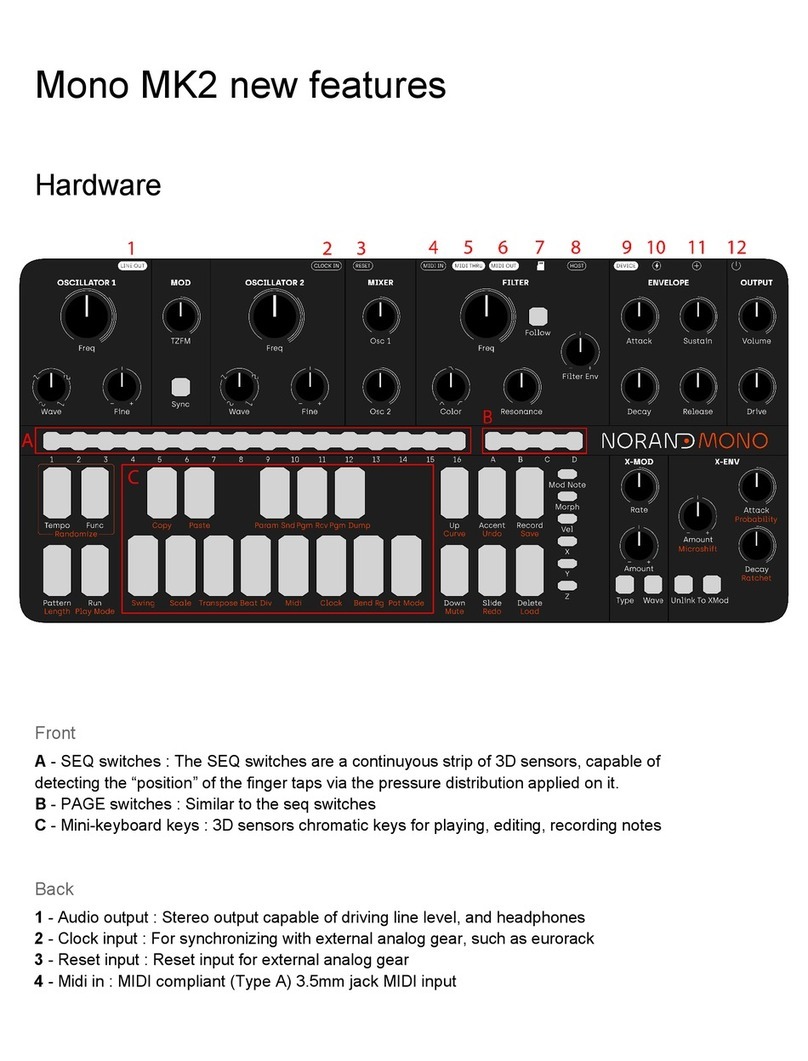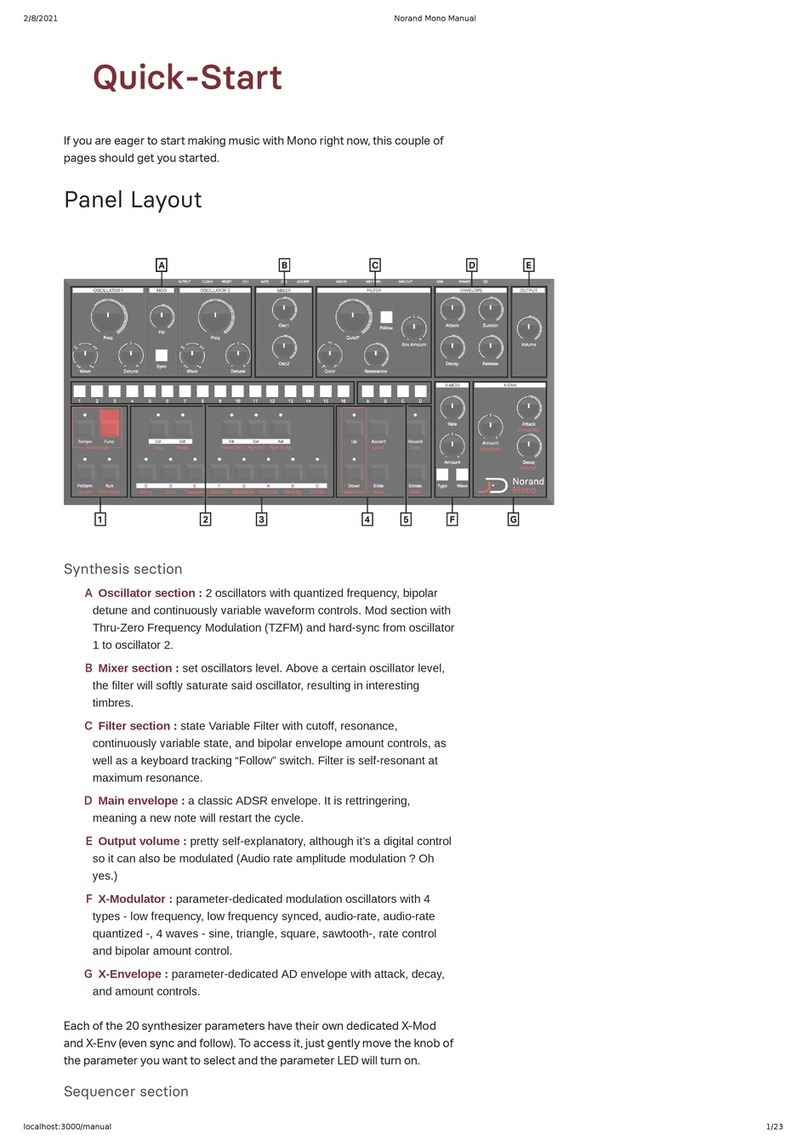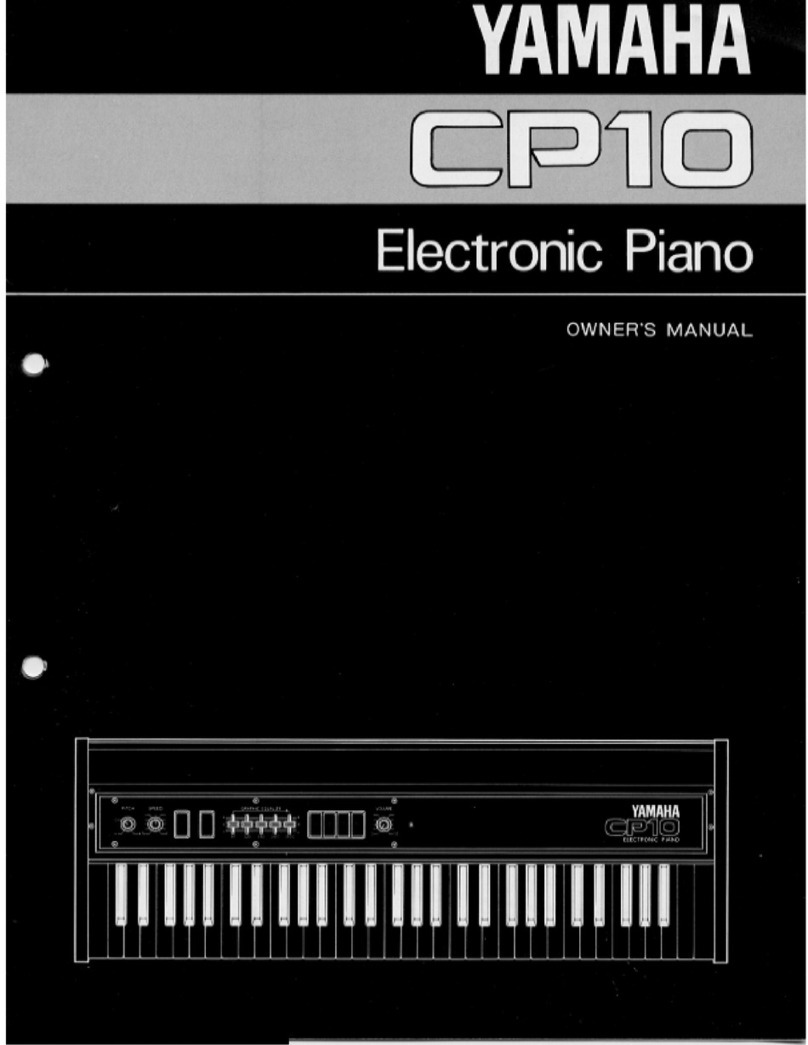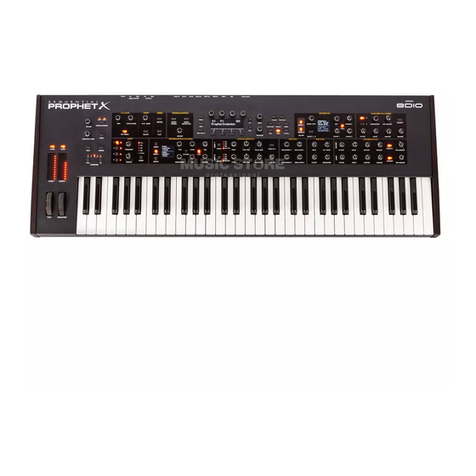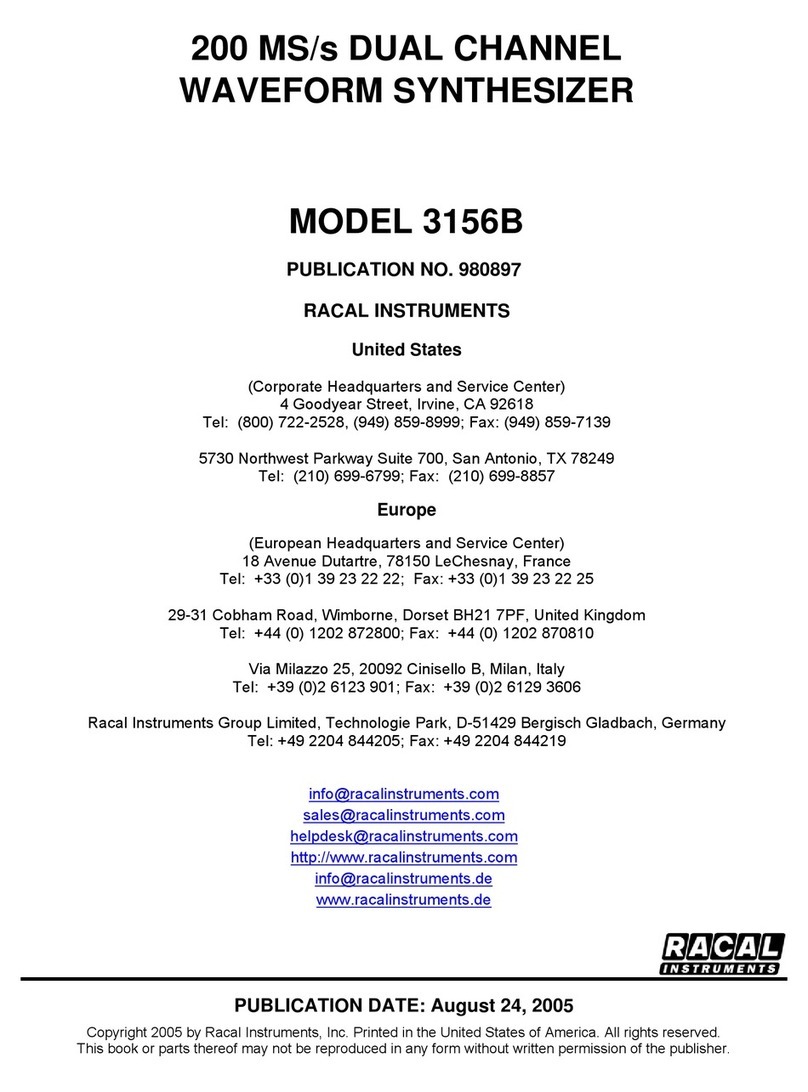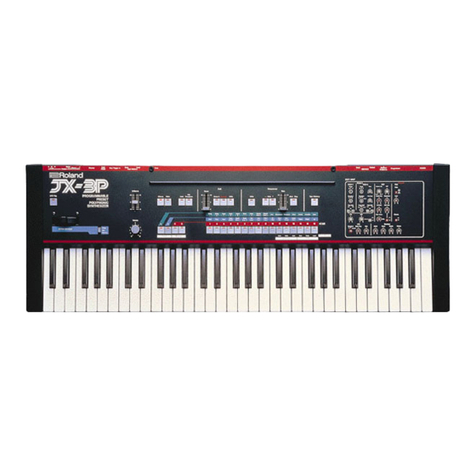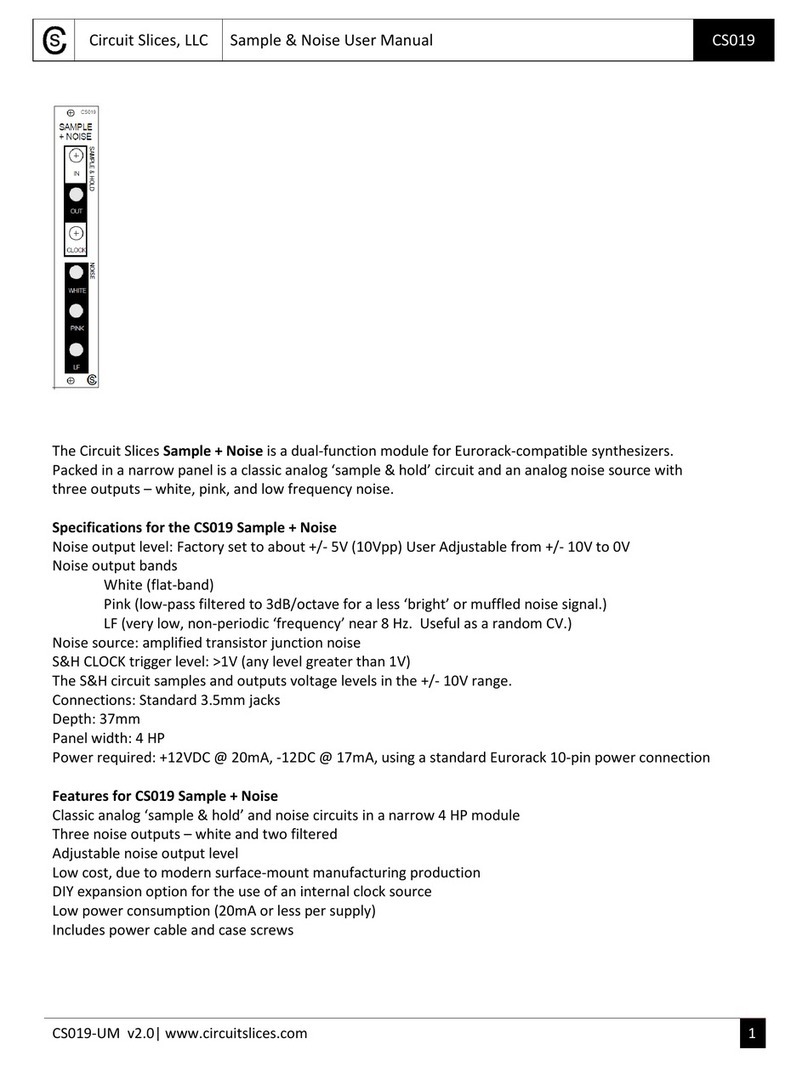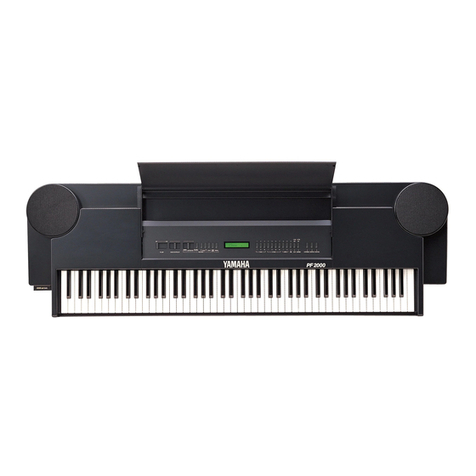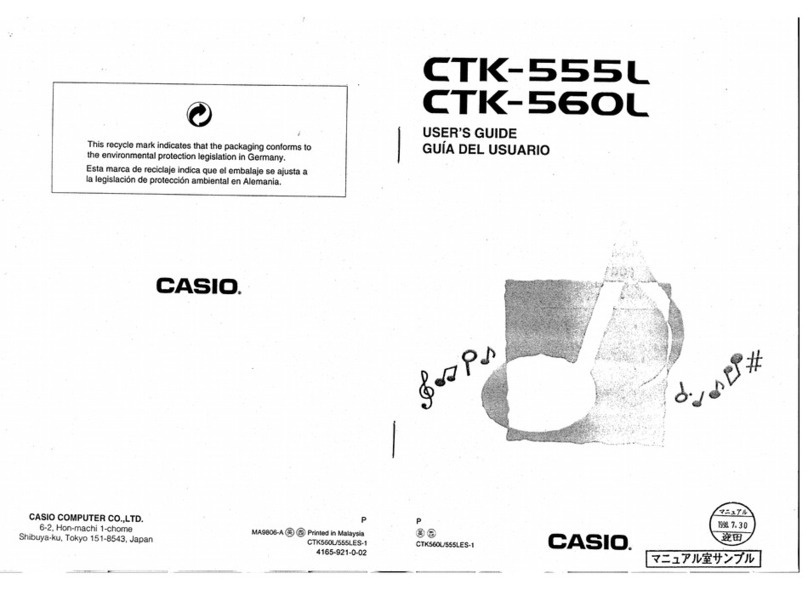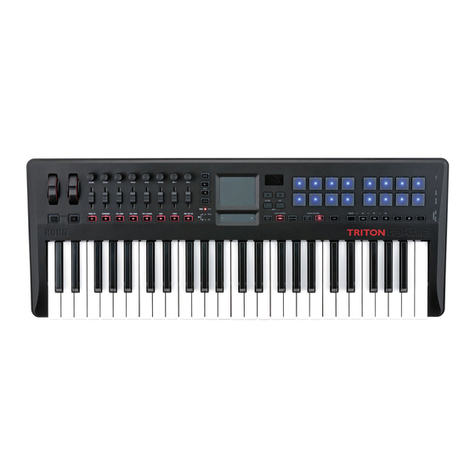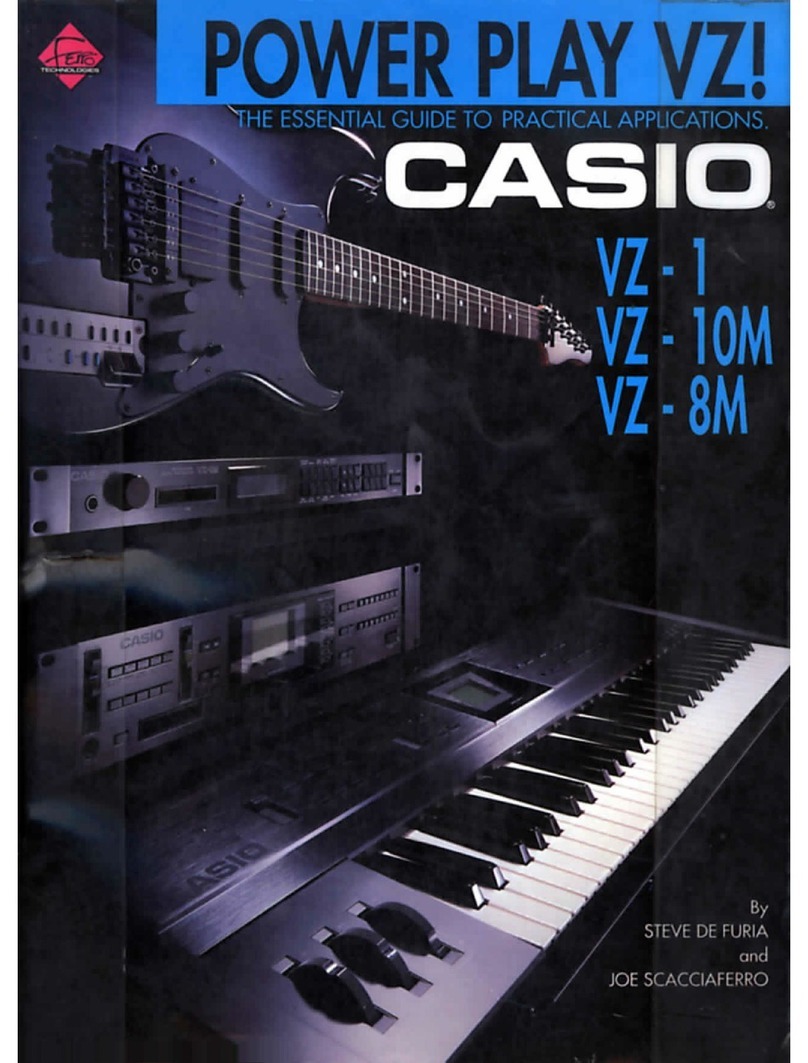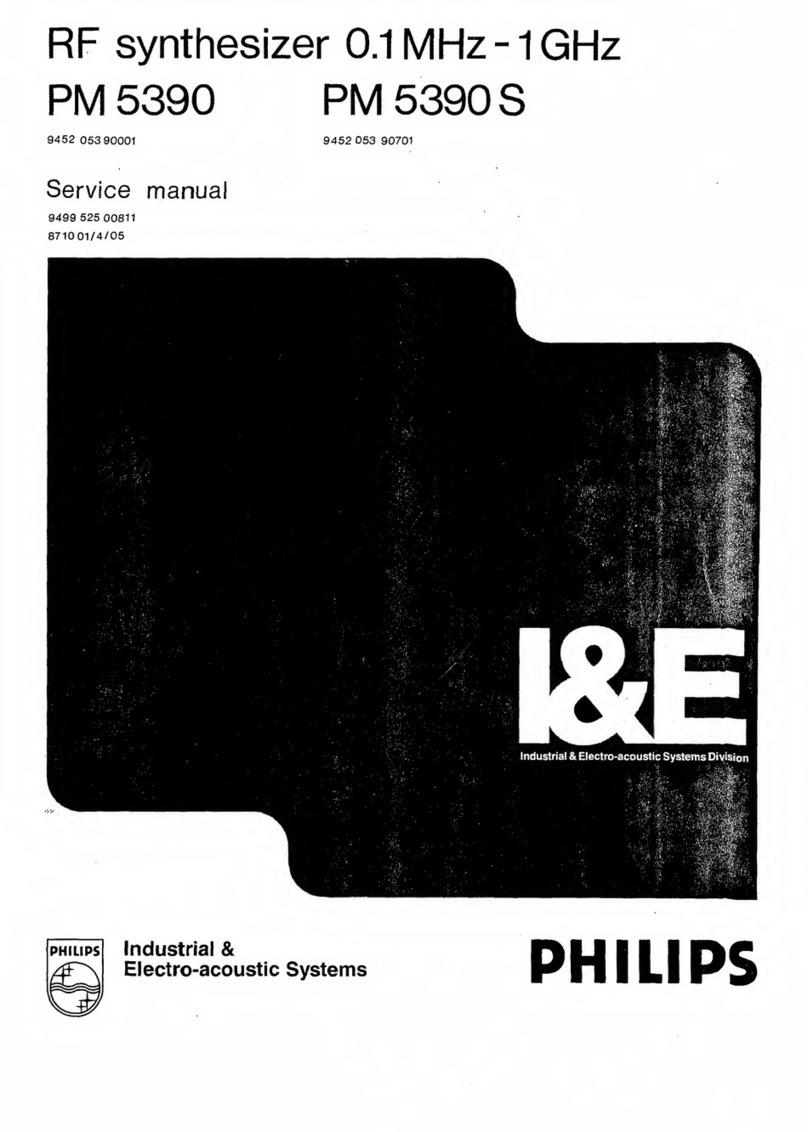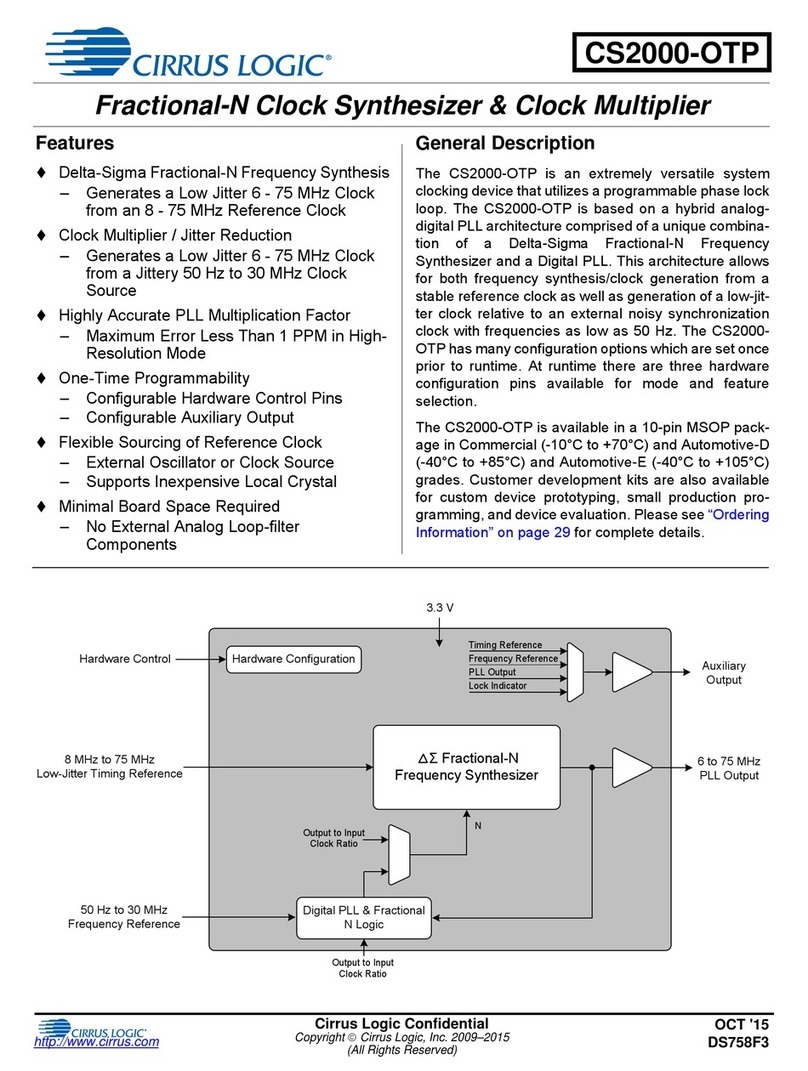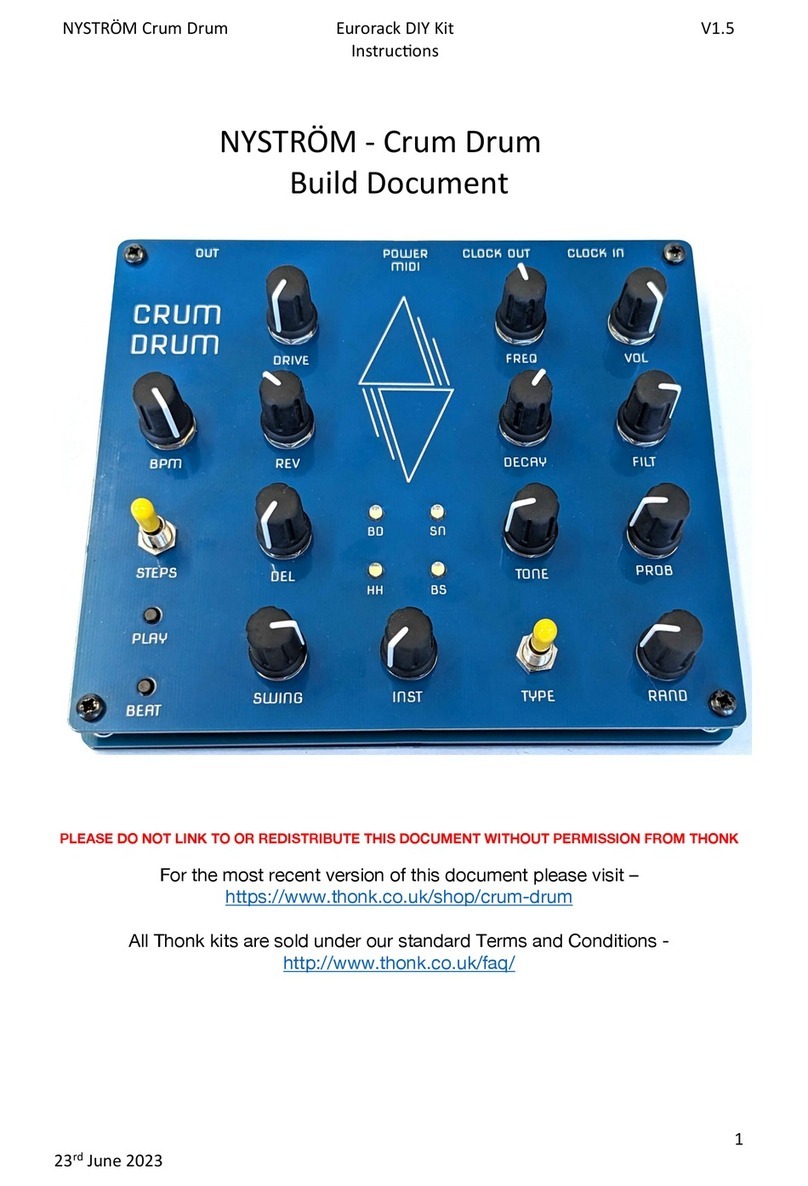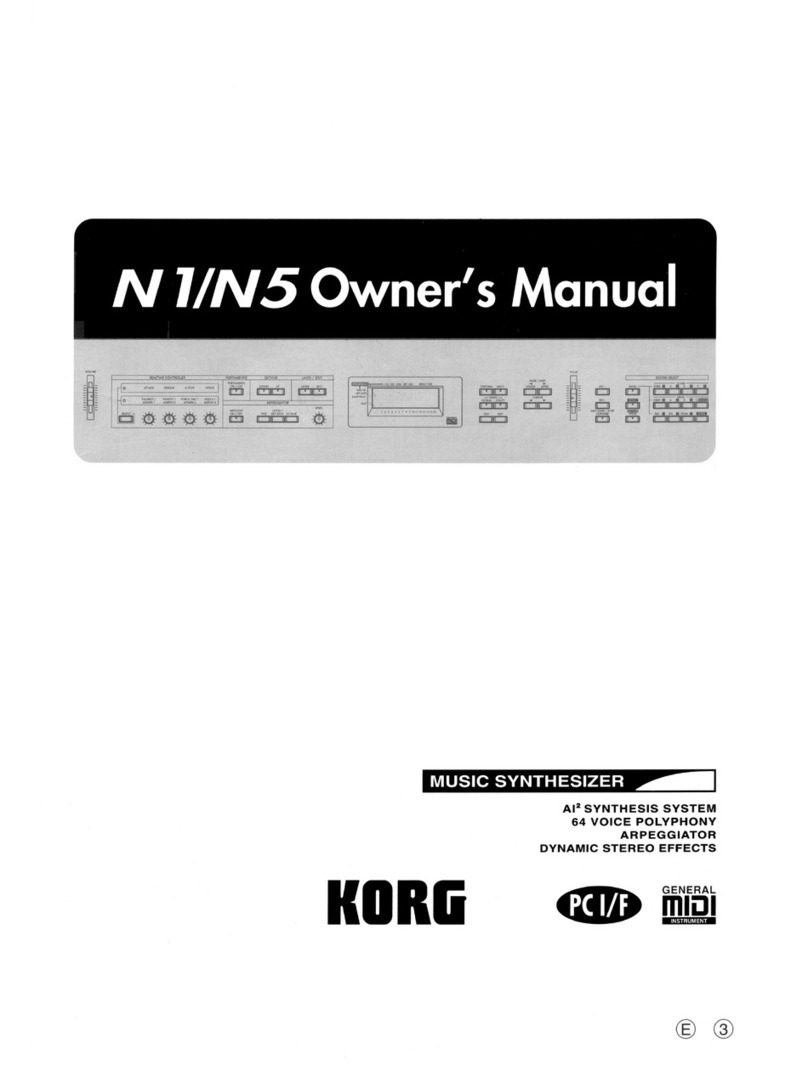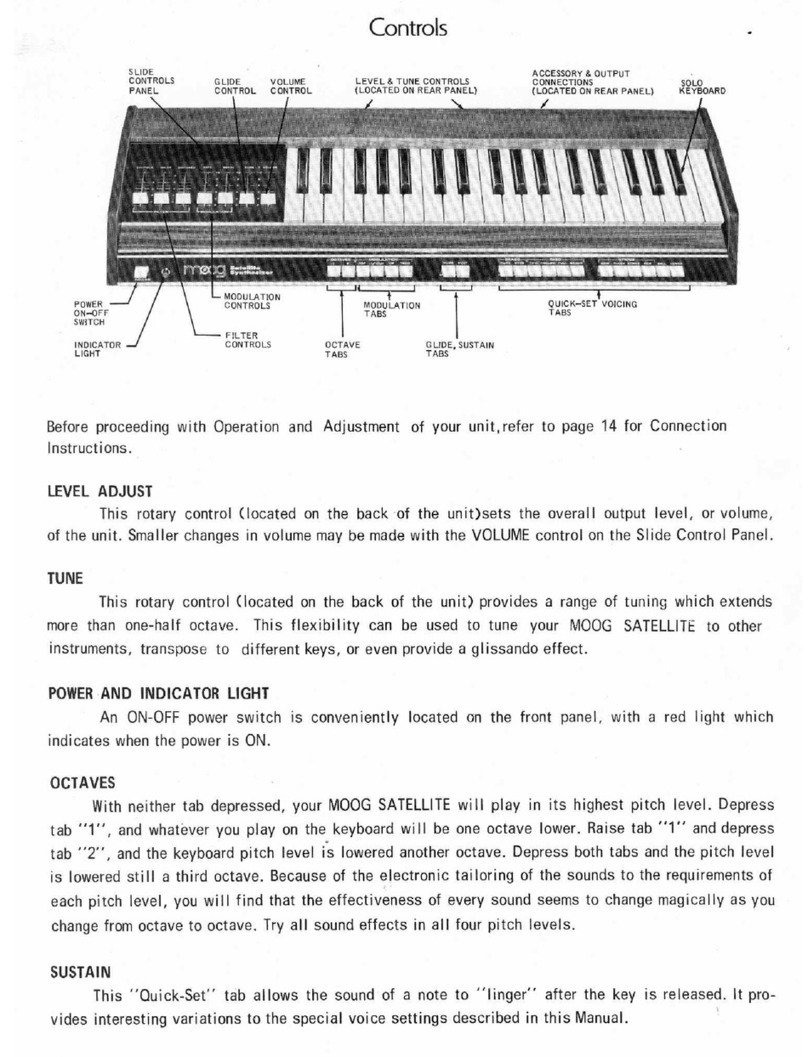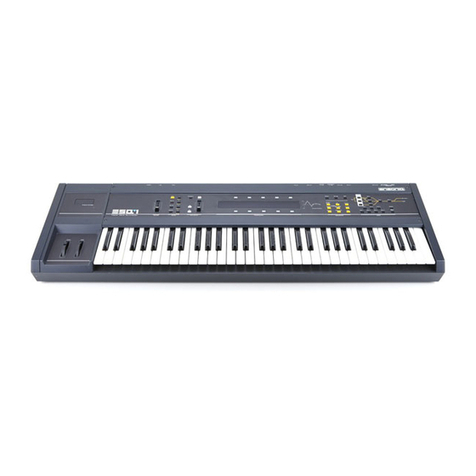Norand Mono MK2 User manual

10/20/23, 11:01 AM
Norand
localhost:3000/monomk2/manual
1/43
Mono MK2 new features
Hardware
Connectors
Front
A SEQ switches : The SEQ switches are a continuyous strip of
3D sensors, capable of detecting the “position” of the finger taps
via the pressure distribution applied on it.
B PAGE switches : Similar to the seq switches
C Mini-keyboard keys : 3D sensors chromatic keys for playing,
editing, recording notes
Back

10/20/23, 11:01 AM
Norand
localhost:3000/monomk2/manual
2/43
1 Audio output : Stereo output capable of driving line level,
and headphones
2 Clock input : For synchronizing with external analog gear,
such as eurorack
3 Reset input : Reset input for external analog gear
4 Midi in : MIDI compliant (Type A) 3.5mm jack MIDI input
5 Midi thru : MIDI compliant (Type A) 3.5mm jack MIDI thru
6 Midi out : MIDI compliant (Type A) 3.5mm jack MIDI out
7 MicroSD card slot : Used for storage, note that Mono needs
an SD card to boot.
8 USB-C Host port : Connect to a MIDI device, such as
asequencer, external keyboard or other synth
9 USB-C Device port : Connect to a MIDI host, such as a
computer
10 USB-C Power port : Dedicated power port. Use the provided
power supply.
11 Extension port : For future semi-modular extension. Note
that although it uses a USB-C port, it IS NOT USB-C. Although it
is protected and there is no risk doing it, do not connect to
anything other than the designed extension.
12 On-Off switch
Power
Mono MK2 can be powered either via its dedicated power port,
or via the USB device port. Note that it require at least 1A
capable ports with broadcast capabilities. MK2 senses the
power capabilities of the power source, there are 3 level of
power.
Normal mode : With the included power supply, or a high
power capable USB-C host, Mono boots in high power mode,
the LEDs are full brightness.
Low power mode : With a 1A capable host, such as a USB 2.0
host, mono will be in low power mode, with the LED in low
brightness.
Standby mode : Mono cannot work correctly with a 0.5A
supply, if it sense such a power supply, it will not boot, or go
to standby mode.

10/20/23, 11:01 AM
Norand
localhost:3000/monomk2/manual
3/43
Drive
MK2 adds a soft overdrive circuit at the output, it is the only
change in the signal path. The output DAC is software
compensated so that driving the signal doesn’t make it louder, it
will just add more and more overtones as you push it harder.
Ther drive circuit as been designed to play extremely well with
the resonant filter !
Expressivity
MK2 now has dedicated Vel, X, Y and Z switches for expressivity
controls. X is the horizontal axis, otherwise known as pitchbend,
Y is the vertical axis, it is triggered by moving up or down on the
minikey, Z is the pressure, or aftwertouch, and Vel is the velocity..
Here is an exhaustive list of the feature.
Enable/Disable
To enable/disable an expressivity channel, simply press one of
the 4 switches. A lit switch indicate that the expressivity
channel is enabled. When enabled, you can play the
minikeyboard expressively.
Using the expressive keyboard without triggering note
Sometimes, you want to use the expressivity control on the
keyboard without triggering keys, to add liveliness to a pattern.
To do so, hold FUNC and press any of the X,Y, and Z switch. The
switch will blink. You can now use the expressive keyboard
without triggering note on a pattern being played.
Programming the expressive modulation
The way expressive channels modulate Mono’s sound is
completely customizable. It can modulate ay of the parameter
of the synthesizer, even the modulation parameter such as XMod
rate. To program it, hold the desired expressive channel (X,Y,Z or
VEL), and turn a knob’s parameter either clockwise to apply
positive modulation, or counterclockwise to apply negative
modulation. When the knob is at noon, no modulation is applied

10/20/23, 11:01 AM
Norand
localhost:3000/monomk2/manual
4/43
to that parameter. Release the switch when you’re done with the
assignment.
Tuned parameter X behaviour
By default the 2 oscillators and the filter have an offset of 1
semitone by MIDI note. The filter tracking can still be
enabled/disabled with the follow switch. On the two oscillators
and the filter the X offset is not linear but quantized, this allow
for microtonal/macrotonal playing. At center position the
oscs/filter don’t track, there are then 6 positions on the positive
and negative side : ⅛ semitone - ¼ semitone - ½ semitone - 1
semitone - 1 tone - 2 tone.
High-resolution automation
One of the most important, if not the most important feature of
MK2. All the automation are now recorded at a very high
resolution (1024PPQN). Allowing for very smooth parameter and
expressivity curves. Recording an automation works just like
MK1. Enable/disable record with the [RECORD] key, and turn any
knobs to record an automation.
Expressivity
Of course, you can also record expressivity when they are
enabled. Simply play the minikeyboard expressively !
Step-quantized automation
Sometimes, a good old step-quantized automation is actually
more suited. When you hold the [UP] key in record mode, and
record any kind of automation, those willb e step-quantized just
like in MK1, release [UP] and it will immediately go back to high-
resolution, making it possible to blend quantized and
unquantized steps in the same automation.
Overdub
The standard behaviour is that the automation recoding will
shortly stop after you stop moving a knob. If you want to
overdub the automation lane you are currently recording, hold
[RECORD]. It will overwrite the previous automation as the
pattern moveforward, as long as [RECORD] is held.

10/20/23, 11:01 AM
Norand
localhost:3000/monomk2/manual
5/43
Curve mode
What’s good of an automation if you cant edit it ? Curve mode
allow you to precisely edit a recorded automation. Go to curve
mode by holding [FUNC] and pressing [UP]. The [SEQ] LED will
show the recorded automation with a color map.
Edit a curve
In curve mode, the recorded automation has anchor points
placed at each maximum and minimum points of the curve.
Similar to how this works in a DAW. When you move an anchor
point, it will move the full curve between the 2 anchor points
around the one being moved.
Moving an anchor point
To show every anchor points of the current curve, simply press
and hold the [UP] key, the anchor points will blink. To move an
anchor point in any direction, press the blinking step you want
to move, and drag it up or down, left or right. The curve will
update after you release the [SEQ] strip.
Morphing
The continuous strips allow for continuouis morphing between
all the patterns of a page. To be able to morph between the
patterns, enable morphing with the MORPH switch, go to pattern
mode by pressing pattern, and use your finger to morph between
the patterns on the [SEQ] strip. The “old” morphing feature via
[FUNC] + [CUTOFF] is also still available.
Tape Playhead
In player mode, if you enable morphing with the MORPH key, you
can use your finger as a playhead. This works in forward or
backward direction. When you release the SEQ strip, the

10/20/23, 11:01 AM
Norand
localhost:3000/monomk2/manual
6/43
playhead will resume playing where it is supposed to, not
ruining your time signature.
Other changes from MK1
Pattern Rotate
The shortcut for pattern rotate has been moved, now you need to
hold [FUNC], and press [PAGE A] to rotate left, and [PAGE D] to
rotate right.
Storage
Note that on the first time you open a project that has never
been used, mono will create it’s directory structure, which takes
a small amount of time (about 20 seconds). The projects are
now stored on an SD card in a serialized format. At any time, you
can copy these folders to your computer to save it, and change
the projects name to reorder it.
Sequencer strips common use
When in player mode, You can use the [SEQ] strip to :
Set note length (from left to right)
Enable/disable note (from right to left)
There are tons of cosmetic UI changes such as the playhead,
parameter offsets visualization etc. Setting offset parameters is
not relative to the currrent potentiometer position anymore, but
to the center position. Although it was handy to start record
automation or place step locks without jumping to a position, it
was pretty much impossible to know exactly what was the
starting position, so you needed to only trust your ears anyway.
Starting from the middle allows to use the maximum range of
offset at any time.
Mono vocabulary
Project : Top structure of mono data architecture, This holds 64
patterns, global settings 40 Mod Notes and 4 custom scales.
Pattern : A sequence of steps to be played in a loop

10/20/23, 11:01 AM
Norand
localhost:3000/monomk2/manual
7/43
Step : An element holding information to be sent to the synthesis
engine to “play” sound.
Synth parameter : A parameter directly controlling the internal
CVs of the underlying analog synthesis engine, such as Wave,
Freq, Cutoff … Even though the envelope is digital, envelope
parameters are considered synth parameters as well.
Modulation parameter : A parameter that modulates a given
synth parameter. Each synth parameters have dedicated
modulation parameters.
Patch : All synth and modulation parameters that form a
particular sound. Each pattern holds its own patch.
Note trig : Information held in a step, triggering the synth engine
with a given note.
Parameter offset : Information held in the sequencer, offsetting
the value of a given parameter with high definition.
Mono sound architecture
Mono data architecture

10/20/23, 11:01 AM
Norand
localhost:3000/monomk2/manual
8/43
Randomizer
Hold [FUNC] + [TEMPO] and :
Press a [PAGE] key : add between 1 and 4 random notes to
the page, the added note are always in scale.
Press a [SEQ] key : Randomize every parameter of said step
except its pitch
Press [GLIDE] or [ACCENT] key to add random glides and
accents
Move a parameter's knob to create a random automation
Remember you can always undo if you don't like what you
hear
Mod note mode
In Mod Note mode, the keyboard no longer act as chromatic,
each of the 8 bottom mini keyboard [NOTE] keys has its own
set of parameters, its own timbre in a way.
Each project has 5 pages of Mod notes, scroll with [UP] or
[DOWN] key. When the mode is activated, both [UP] and [DOWN]

10/20/23, 11:01 AM
Norand
localhost:3000/monomk2/manual
9/43
Settings cheat sheet
Length : Set pattern length with the [SEQ] and [PAGE] keys.
Play Style : Set play style on the play mode setting :
1 Forward (Default)
2 Reverse
3 Synced Pendulum
4 Pendulum
5 Drunk (2 Forward, 1 backward)
6 Reverse drunk
7 Random Drunk (75% chance forward, 25% backward)
8 Reverse Random Drunk
9 Random
Play Modes : Set play modes with the [PAGE] keys on play mode
setting.
A Sequential (default)
B Direct Jump
C Direct Start
Swing : Set swing value. Default is 9 (no swing). Greater value
add swing and lower value add shuffle. The [PAGE] key is for
enable/disable duophonic mode.
A Disabled B Enabled
Scale : Set root note with [NOTE] keys, and scale with the [SEQ]
keys.
key LED are on.
To edit one of the moded note, hold a mini-keyboard key and
set its parameter. You can then add steps of the selected
moded note, or play live and record it.

10/20/23, 11:01 AM
Norand
localhost:3000/monomk2/manual
10/43
1 Chromatic (default)
2 Major
3 Melodic minor
4 Harmonic minor
5 Arabic
6 Dorian
7 Aeolian
8 Phrygian
9 Gypsy
10 Mixolidian
11 Romanian minor
12 Gypsy minor
13 japanese
14 Spanish
15 blues
Transpose : Set transpose with [NOTE] keys for semi-tone
transposition and [SEQ] key for octave transposition, [SEQ] key 8
is the default value.
Beat div : Set the number of step per beat :
1 1:16
2 1:12
3 1:8
4 1:6
5 1:4 (Default)
6 1:3
7 1:2
8 2:3
9 1:1
10 3:2
11 2:1
MIDI : Set MIDI channel with [SEQ] key
Clock : Set clock source with [PAGE] key.

10/20/23, 11:01 AM
Norand
localhost:3000/monomk2/manual
11/43
1 Internal 2 MIDI 3 USB 4 CV
Bend Rg : Sets pitch bend range from 1 to 16 semitones with
[SEQ] key. The [PAGE] keys enable/disable the time quantization.
A Disable time quantization B Enable time quantization
Pot Mode : Sets potentiometer mode.
1 Jump 2 Passthru 3 Relative
Param Snd : Enable/Disable CC parameter send.
1 Disabled 2 Enabled
Pgm Rcv : Wait to receive a project file as sysex.
Pgm Dump : Dump the current project as a sysex file
Synthesis Engine
Intro
By the looks of it, Mono has everything of an East Coast
synthesizer. There is a clear signal flow from left to right,
starting from the oscillators, through the filter, and finally to the
amplifier. But the contextual modulations (X-Modulator and X-
Envelope) let any user alter each synth parameter so deeply that
one can effectively use west coast synthesis techniques to craft
the timbre. Indeed, one can easily make a good sounding patch
using a single oscillator with Mono ! Let's dive into each part.
East coast synthesis

10/20/23, 11:01 AM
Norand
localhost:3000/monomk2/manual
12/43
Oscillator block
VCO VCF VCA
East coast synthesis usually describe subtractive synthesis
techniques, where the sound designers start with an oscillator
rich in harmonics, and then shape the sound by removing
(subtracting) harmonics with filters.
West coast synthesis
EG VCO LPG
West Coast synthesis describes a different approach. It
tipically feature oscillators with simple shapes, that are then
heavily modulated using FM and waveshaping techniques to
create complex timbre.

10/20/23, 11:01 AM
Norand
localhost:3000/monomk2/manual
13/43
Mono offers 2 analog oscillators with continuously variable
waveforms, thru-zero frequency modulation, and hard sync. For
the electronic geeks among us, the oscillators are based around
a unique discrete asymmetric integrator. In “layman” terms, it
means that the triangle core waveform is not perfect, it is a bit
“skewed”, which gives it and the sinus wave a slightly richer
harmonic content.
Each oscillator has 3 parameters. The big [FREQ] knob adjusts
the pitch in semitones, from C0 to C8. The [DETUNE] knob has a
range of two semitones, with a pitch perfect 440Hz tuning in the
middle.
The [WAVE] parameters smoothly fade from sinus, to triangle, to
square and finally to sawtooth wave. You basically go from the
dullest of sounds to the richest in terms of harmonics.
The two mod parameters give you additional sound design tools
: the [SYNC] key synchronizes the wave cycle of oscillator 2 with
oscillator 1; the [TZFM] parameter modulates the frequency of
oscillator 2
· the carrier ·
with oscillator 1
· the modulator ·
. It is
analog thru-zero frequency modulation, which has a very rich
distinctive sound.
Finally you can adjust the amount of both oscillators fed to the
filter with [OSC1] and [OSC2] parameters. At high gain, the
oscillators overdrive the filter, so you can also use this
parameter creatively.
Although limited compared to other big monosynths (only 2
oscillators ?! No noise ?! What is this ?), this oscillator block
allows for a huge landscape of timbre. This can range from
subtle bell-like sounds to very harsh saturated noise. All this
without even touching contextual modulation. Adding the latter
makes for a very complex oscillator system.

10/20/23, 11:01 AM
Norand
localhost:3000/monomk2/manual
14/43
Just a simple example : use the X-Modulator at audio rate on the
Freq parameter of both oscillators - you get a 4-operator hybrid
FM synth (for normal people, this translates to: “You can do some
pretty cool stuff with this synth”).
Oscillator Sync
I'm lazy so here is the wikipedia definition : As one oscillator
·
the master ·
finishes a cycle, it resets the period of another
oscillator
· the slave ·
, forcing the latter to have the same base
frequency. This can produce a harmonically rich sound, the
timbre of which can be altered by varying the synced
oscillator's frequency. And here is a nice schematic with
sawtooth wave example.
Thru-Zero Frequency
modulation
FM (Frequency Modulation) is a very deep subject with whole
books written about it, I'll do my best to explain it shortly.
Let's start with what FM is : the output of one oscillator
· the
modulator ·
is used to control the frequency of another
oscillator
· the carrier ·
. This will in turn enrich the harmonic
content of the carrier, by effectively “spliting” each of it's base
harmonic. There are two main type of FM : exponential and
linear. Unlike exponential FM, linear FM can reach zero hertz,
which basically stops the oscillators, which is not very
pleasing in term of musicality. Thru-zero FM alleviate this
problem by introducing “negative” frequency. When the
oscilator reaches zero hertz, it will reverse it's cycle and start

10/20/23, 11:01 AM
Norand
localhost:3000/monomk2/manual
15/43
Filter block
Mono's filter is a resonant filter with low-pass, high-pass and
band-pass output. Like the oscillator, it is a unique design :
discrete integrator cells arranged in a three cell 18dB slope
state-variable filter. It features a stable self oscillation at
maximum resonance and it is precisely tuned like the
oscillators. When driven hard, it saturates the input signal
asymmetrically
· only the negative voltage is clipped ·
.
The [CUTOFF] parameter sets the frequency, from C-1 to C10.
Although you won't necessarily hear it because it is smoothed,
the filter knob is quantized to semitones (just the knob, not the
modulations). This is a controversial feature, but this is the only
way to make the filter resonance perfectly tuned with the
oscillator.
The [RESONANCE] parameter goes from a very attenuated cutoff
point to self-resonant, with lots of nice things in the middle. The
resonance peak is quite shallow, which allows the user to “scan”
the harmonic content of the input when swept.
The [COLOR] parameters continuously fade from band-pass, to
low-pass, to high-pass output. On these types of continous
oscillating backward, and when it crosses zero hertz, it will
reverse again back to “positive” frequencies. Note that I put
negative and positive in quote, in the real world there is no
such thing as negative frequency.

10/20/23, 11:01 AM
Norand
localhost:3000/monomk2/manual
16/43
outputs, you'll usually find band-pass in the middle, but I find
that quite boring, so there's that. There are some very interesting
timbres in between each output. For example, put the knob
halfway between low-pass and high-pass, and you get a
resonant all-pass filter !
The [FOLLOW] key toggles keyboard follow : when enabled,
cutoff frequency is linked to the current note pitch.
Finally the [ENV AMOUNT] parameter adjusts how much of the
main envelope contour is applied to the cutoff frequency
parameter. It's bipolar : no effect in the center position, positive
envelope in the clockwise direction, and negative envelope in
the counter-clockwise direction.
Amplifier and main envelope
There is not much to say here, the [VOLUME] parameters
surprisingly adjust the output volume. The envelope is a
(somewhat) classic exponential ADSR envelope with no
retriggering.
There is a case where it doesn't behave like a classic analog
envelope though : Usually when given a short trigger, an ADSR
will perform its attack cycle only if very short, and then the
release cycle. If the trigger is too short or the attack is long, it
won't even reach the maximum level. If this was the case here,
the attack parameter would be useless when using the
sequencer.
Here is how it works instead : when the gate is shorter than the
attack time, the envelope acts as an AD envelope : it will
perform a full attack cycle, and then a decay cycle down to 0.

10/20/23, 11:01 AM
Norand
localhost:3000/monomk2/manual
17/43
Drive
MK2 adds a soft overdrive circuit at the output, it is the only
change in the signal path. The output DAC is software
compensated so that driving the signal doesn’t make it louder, it
will just add more and more overtones as you push it harder.
Ther drive circuit as been designed to play extremely well with
the resonant filter !
Master volume
The volumes are recorded into each patch and mod notes
separately which make it impossible to adjust the global
volume output. Of course we needed to address that : there's a
"hidden" master volume control, which is not recorded into
project. To adjust it, hold [FUNC] and turn the [VOLUME] knob.
Modulation
Intro

10/20/23, 11:01 AM
Norand
localhost:3000/monomk2/manual
18/43
This is where all the fun begins … Remember your old synth
where you get to play with one LFO that you can assign to a 2 or
3 parameters ? Those were great ! Then the digital era
introduced the “Modulation Matrix” which are admittedly much
better in terms of synthesis possibilities, but are kind of a pain
in the arse to work with. One of my favourite features with
software synths is the fact that one can have an unlimited
amount of modulators for each and every possible synthesis
parameter - Mono implements this without menu-diving or 200
potentiometers.
Contextual modulators
When you select something in a software instrument, you usually
get a contextual menu appearing somewhere. Mono's X-
modulator and X-envelope works in the same way. When you
slightly move a parameter's potentiometer, it will be selected (a
selected parameter is indicated by a bright orange LED). You can
then edit that parameter's AD envelope and modulator.
Every single parameter has its own envelope and modulator with
their dedicated settings, there are no limitations. That's 18
Modulators and 14 AD envelopes. the main envelope parameters
don't have an envelope, that wouldn't make sense.
X-Envelope
The X-Envelopes are AD envelopes triggered by the sequencer's
note trig, incoming MIDI, or their very own trig sequence. Like
the main envelope, they always complete their attack cycle
before going to the decay cycle. The [ATTACK] and [DECAY]
potentiometers control attack and decay times, and the
[AMOUNT] potentiometer controls the envelope amount. Like the
filter, it is bipolar, you can have negative or positive envelopes.
By default, the X-Envelope is applied to the parameter, but it can
be routed to the X-Modulator amount : simply press [TO_XMOD]
on the selected parameter, the LED should turn on, indicating
that the X-Envelope is routed to X-Mod amount.

10/20/23, 11:01 AM
Norand
localhost:3000/monomk2/manual
19/43
X-Modulator
The X-Modulators are simple oscillators, I didn't call them LFO
because one of their best use cases is in audio rate mode.
The [WAVE] key cycles between sinusoidal (orange), triangle
(light blue), square (yellow), sawtooth (dark blue), and S&H (pur)
waveforms.
The [TYPE] key lets you select one of the 3 types : LFO (LED off),
synced LFO (LED blinking), and Audio Rate (LED on). LFO mode
gives you rates between 40 seconds and 100ms, synced LFO has
12 different sync values, and resets at the beginning of the
pattern. At audio-rate you get a tuned modulator ranging from
C0 to C8. In audio rate, the X-modulators follow oscillator 1
frequency.
A few examples
Kick drum
A kick drum starts with a simple tone with a
pitch envelope.
Open the filter
turn up oscillator one
Set oscillator 1 wave to sinus
Set a low frequency to oscillator 1
Select Oscillator 1
Set X-Env Attack to minimum
Set X-Env Decay center
Slowly turn X-Env amount clockwise while triggering Mono
Et voilà, the beginning of your own amazing kick
Evolving phase effect
When 2 oscillator's frequencies are very close, it leads to
interesting phase effects. If you modulate that frequency with

10/20/23, 11:01 AM
Norand
localhost:3000/monomk2/manual
20/43
an LFO, the effect will evolve in time,
leading to even nicer subtle changes.
Open the filter
Turn up both oscillator
Set both oscillator frequency to the same
pitch
Select oscillator 1 detune
Set X-Mod to LFO or Synced LFO
Set X-Mod Rate as you see fit
Slowly turn X-Mod amount, either way
Let the magic happen
Pinged FM sound
Most string instruments have a rich
harmonic content at the beginning, and
then slowly fade to a more muffled sound.
In East-Coast synthesis this is usually
imitated with an enveloped low-pass filter.
West-Coast approach usually involve FM
instead, here is one way to do it :
Open the filter
Turn up oscillator 2
Set oscillator 2 to sinus wave
Set oscillator 1 and 2 frequency 1 octave apart (or not)
Select FM parameter
Set X-Env Attack to minimum
Set X-Env Decay center
Slowly turn X-Env amount clockwise while triggering Mono
The more you open it, the bigger the effect
Filter FM
Mono's filter responds really well to
frequency modulation, it's a cool option to
add harmonic content to any patch.
Start with any patch you want
Select filter cutoff parameter
Set X-Mod to audio-rate
Other manuals for Mono MK2
1
Table of contents
Other Norand Synthesizer manuals
